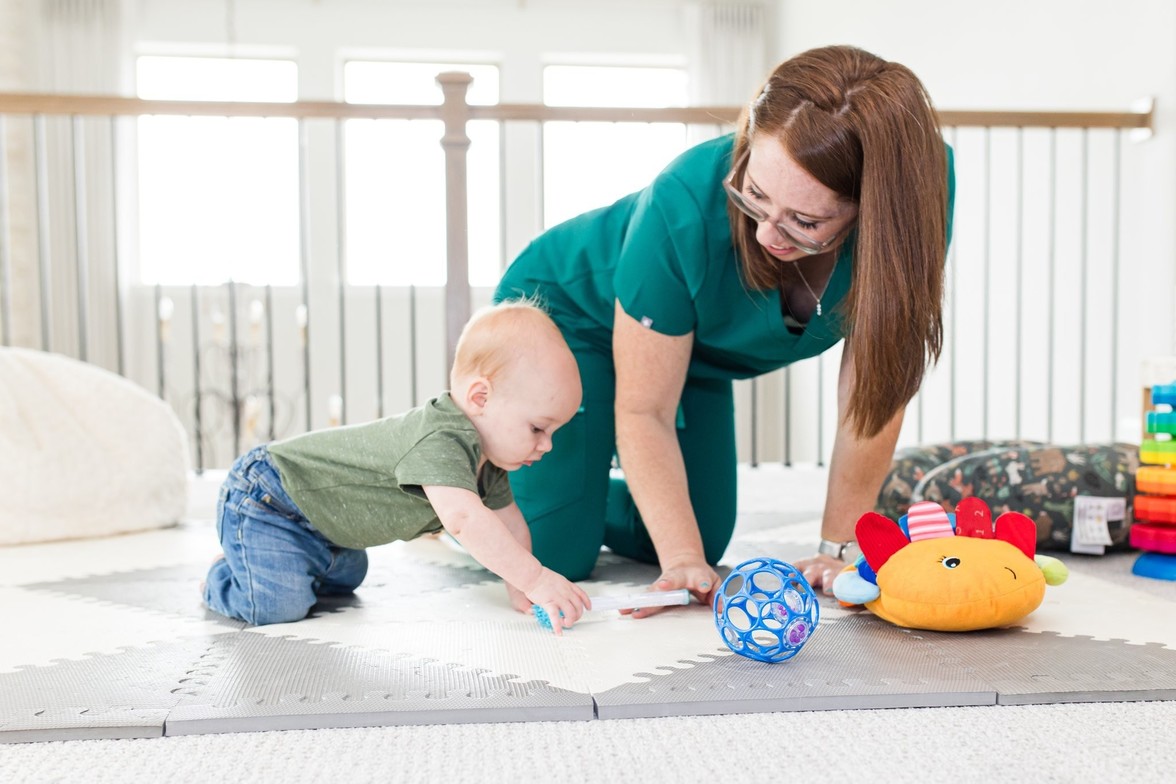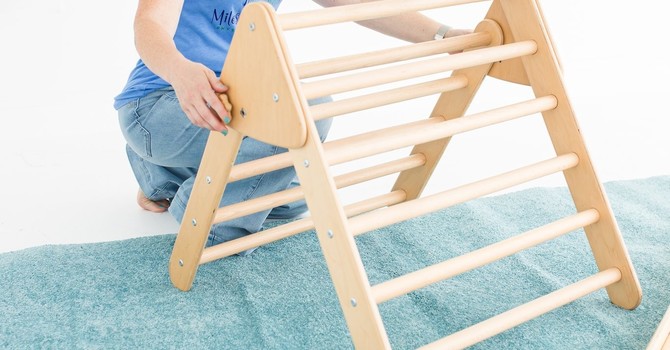
"How can I help my baby transition from army crawling to crawling on their hands and knees?" I get this question quite often, and while it is not always a black and white answer, here are some tips and tricks from a pediatric physical therapist.
Why Crawling Matters
Crawling is more than just a way for babies to move around. It’s a critical stage of development that helps establish bilateral coordination and neuromotor pathways. Crawling also lays the foundation for future gross motor skills, such as walking, running, and climbing, while promoting a strong core, upper, and lower body strength, and motor planning! It’s really amazing how many benefits come from crawling.
5 Purposeful Activities to Help
To promote crawling, there are five activities I suggest incorporating into floor time, and you don't need fancy equipment or toys. Many of them may not seem like crawling activities, but, trust me, they will get your child there! Development is a continuum and a continuation of skills; many mini-milestones must be mastered before a child can crawl on their hands and knees.Side Sitting Side sitting is sitting with one leg in front and the other behind. It shows us a child has adequate flexibility and strength and demonstrates they can sit in various positions utilizing their balance to maintain upright. When a child moves from their tummy to sitting or sitting to crawling on hands and knees, chances are they move through side sitting. In my experience as a pediatric physical therapist, I often find the inability to side sit is a roadblock to crawling on hands and knees. So, master side sitting and your child is one step closer to crawling on their hands and knees. Here are a few posts and reels on our Instagram if you want to see more on side sitting:
- Why Is Trunk Rotation Important?
- 3 Reasons to Encourage Side Sitting
- Ever Wonder Why Side Sitting Is Important?
Tummy to Sitting Transition
This is such a fun skill and puts a lot of pieces of the puzzle together. Helping your child learn to transition from their tummy to sitting unlocks so much independence for them! This transition takes a child from their tummy, to their hands and knees, through side sitting, and into the sitting position. Practicing this transition not only builds strength in their entire body, it also helps build coordination and motor planning skills - all needed for crawling on hands and knees. This is a multi-step process and mastering it sets your little one up for crawling on hands and knees. Check out this reel on Instagram for a visual:
Kneeling With Hands Propped Up
This is essentially the crawling on hands and knees position, just elevated - making it easier for your child to complete! Kneeling teaches a child to have their lower body in flexion while their upper body is in extension. You will likely need to initially help your child and place them in the kneeling position, but don't worry - most gain independence quickly! Kneeling with their hands on a surface helps build strength in their hips, trunk, and shoulders. We want our little ones to be successful while they’re building the strength and endurance they need to crawl on their hands and knees, so I highly recommend using an engaging toy to keep their interest. It can be challenging at first, but it is so worth it! You can also add in some rocking for an added benefit once they’ve mastered the basics:
Knee Walking
Keep that diaper box or push toy handy, and use it to help your little one take steps forward on their knees while pushing the diaper box or push toy forward. This activity strengthens their lower body and trunk, and allows them to focus on moving their lower half, just as they would when crawling on hands and knees. Once your little one masters this, we know they have the strength and coordination to successfully crawl on their hands and knees.
Crawling Obstacles
Obstacle courses are one of my favorite things to do, regardless of age! So how do we use obstacle courses for your baby to help them transition from army crawling to crawling on hands and knees? We use pillows, couch cushions, bolsters, soft play mats, and even our legs! Place a toy on the opposite side of an obstacle and encourage your child to climb over it. Climbing over an obstacle automatically encourages your child to push up onto hands and knees to get over the hinderance. Also, there’s so much problem solving and motor planning skills obtained when practicing climbing over obstacles. Check out this reel on Instagram for more:
These activities are very purposeful and may be a challenge for your baby. But, remember, baby should be happy and enjoy the process - and so should you! You should still enjoy this time with your baby and making lasting core memories!
As always, if you feel your child would benefit from one-on-one, individualized physical therapy intervention let us know. We're here to help!


